Things You'll Need
Moist, warm environment
Guarana seeds, cuttings or plants
Small plastic pots
Moist, warm location
Hydrochloric acid supplement formulated for plants
Houseplant soil or rich acid soil with organic fertilizer
Pruning shears
Tall trellis
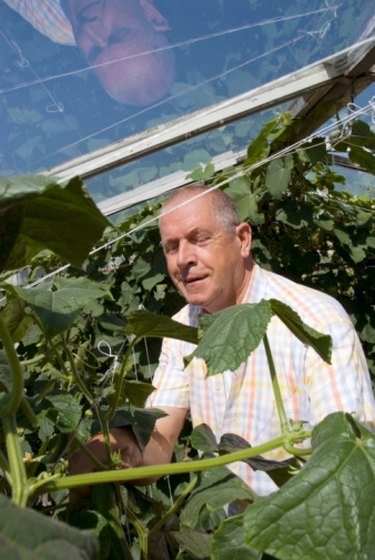
Cultivate the guarana bush (Paullinia cupana) and experience one of the wonders of the Brazilian rain forest. Guarana is a climbing shrub that gets as tall as 35 to 40 feet. Because of the high humidity, full sun and height requirements, growing guarana is a project for the dedicated tropical plant enthusiast or herbalist. Amazon tribes have been using guarana medicinally and as a beverage for hundreds of years. Guarana's caffeine content is higher than coffee but is released slowly, creating a sustained stimulating effect. Seeds from the red guarana berry are ground to produce a powdered tea or an extract with a tart and fruity flavor. Guarana is used worldwide today in popular energy and sports drinks.
Cultivating Guarana is Challenging
Step 1
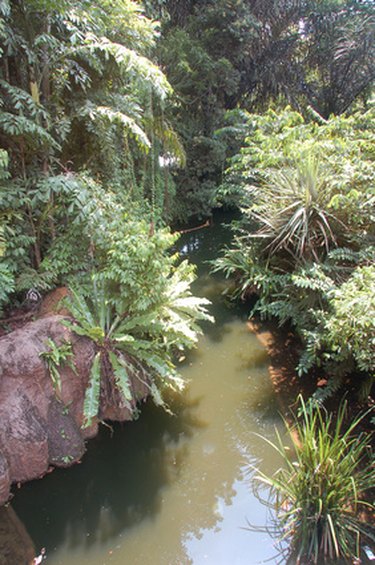
Create a tropical rain forest growing environment. There are very few parts of the United States where guarana can be grown outdoors. Semi-tropical parts of Florida, the Hawaiian Islands, Puerto Rico and the US Virgin Islands could support guarana if the location has ample humidity and moisture. Otherwise, you will need a greenhouse or sun space with a high ceiling and the ability to provide high humidity -- misting chambers are a necessity, according to Purdue University.
Video of the Day
Step 2
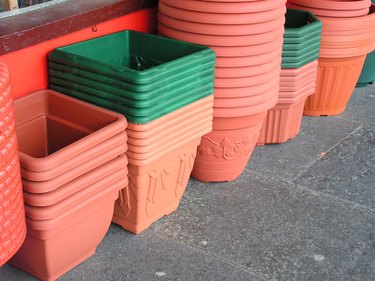
Obtain guarana seeds, cuttings or plants and planting materials. Guarana seeds must be very fresh or they will not germinate. Plants are hard to obtain but are occasionally available in Florida or California. Elsewhere, contact local Garden clubs to see if any tropical plant enthusiasts are growing guarana. Obtaining a plant or cutting from another hobbyist is a good way to start.
Step 3
Plant cuttings or seeds. Use small 4-inch diameter plastic pots that have multiple drainage holes. Fill the pots with houseplant or organic potting soil and water well to wet all soil. To use seeds, soak them for 24 hours before planting. Use a pencil or your finger to make two to three holes about 1/2 inch deep. Drop a seed in each hole and tamp the soil firmly over the seeds. Due to the low germination rate, plant more pots than you need. For cuttings, plant stem ends 2 inches deep in equal parts moist potting soil and vermiculite or use a non-soil based potting mixture.
Step 4
Place planted pots in sunny window, greenhouse window, sun room, porch or other warm, sunny area. Place on heated seed germinating mats or use lights to keep the seeds warm. Keep soil moist by covering pots with plastic but allow some space so air can circulate to prevent fungal growth. Take care that the temperature does not drop below 65 degrees Fahrenheit. You can keep the pots outside in a sunny but sheltered spot if your climate is warm enough.
Step 5
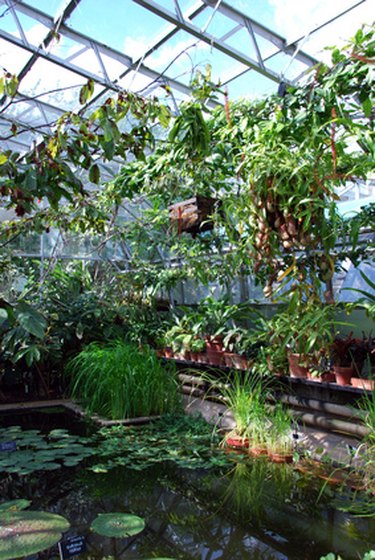
Transplant seedlings when they are at least 3 inches tall, taking care not to damage roots. If growing outdoors, select a sunny location that can be kept moist. Guarana grows in acid soil, so test your soil to ensure the pH is between 3.5 and 4.5. If your soil is alkaline, add organic sulfur to lower the pH. Indoors transplant seedlings to an 8- to 10-inch pot, and choose a sunny exposure. Provide good air circulation and keep the plants moist but not soggy. After the plants make good growth, transfer to a 14-inch or larger diameter container.
Step 6
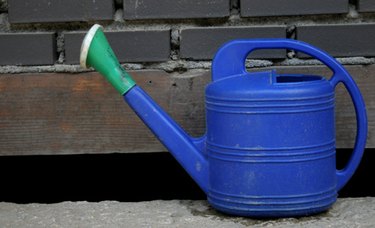
Do not fertilize indoor plants as soils must be from 3.5 to 4.5 pH. Mist daily, especially in the morning before the sun touches the leaves. As plants grow, provide support. Guarana is a tall, climbing shrub that will eventually require a trellis and a location where light reaches all of the plant as it grows vertically. A greenhouse or sun space with tall walls is ideal.
Step 7
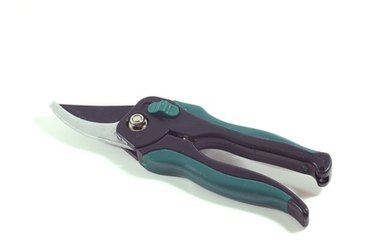
Prune guarana plants the second year. As the shrub gains height, pruning to remove old or diseased branches is necessary to keep it from collapsing under its own weight. In addition, trim off branches that flowered the previous year. Remove unwanted new shoots to make cuttings. Root cuttings in a vermiculite and soil mixture to start new plants if desired. When plants are large enough to produce berry clusters, it is time to harvest the fruit.
Step 8
Harvest the berries. Guarana berries are produced in racemes or clusters. When the fruit is orange-red, snip off the clusters with shears. If you plan to germinate the seeds to produce more plants, do so within 48 hours. After three days viability decreases dramatically.
Step 9
Process the fruit and dry the seeds. Soak the fruit in water until the outer skin softens Remove the skins. To avoid staining, wear lightweight surgical gloves available in hardware stores. Rinse off the seeds and drain on paper towels. Then place seeds on additional paper towels and allow to dry completely in a warm, dry place. Toast dried seeds in medium heat oven to achieve roasted coffee-like product. Grind seeds to use as tea or in recipes.
Step 10

Tip
Keep plants warm and moist at all times. You may need to make several growing attempts to achieve success. Store powder in a cool dry place.
Warning
Do not skip fertilizing, rising pH will kill the plant. Keep air circulating to avoid fungus and root rot. Read about side effects before using guarana. Too much guarana is exhausting and dangerous.
Video of the Day